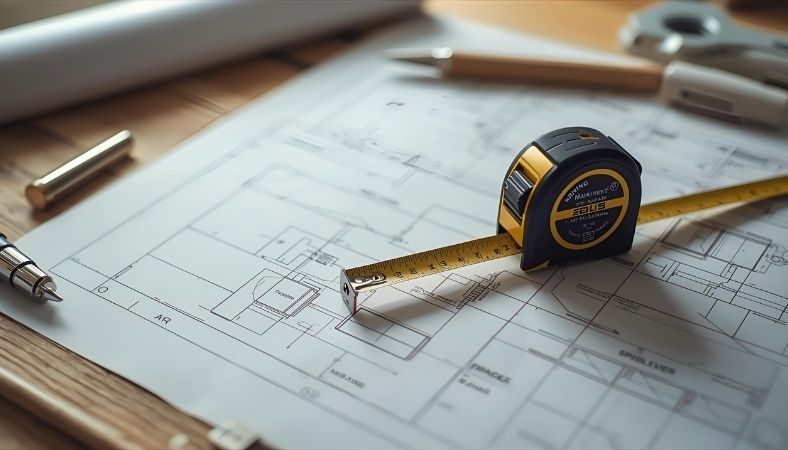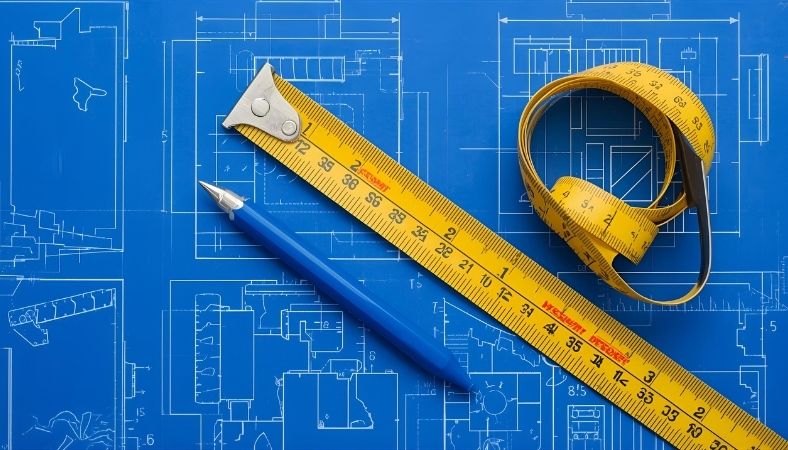Master convert cubic feet to liters with our simple formula, real-world examples, and handy tools. Perfect for construction, shipping, or DIY projects get accurate results fast.
Picture yourself planning a big DIY project, like setting up a new aquarium or figuring out how much water your backyard pool holds. You’ve got measurements in cubic feet, but the equipment specs are in liters. Sound familiar? Converting cubic feet to liters is a common hurdle, whether you’re a student tackling homework, a contractor sizing HVAC systems, or just someone curious about volume units. This guide breaks it down with a clear formula, practical tips, and real-life examples to make the process a breeze.
Key Takeaways
- One cubic foot is about 28.32 liters, a must-know for switching between imperial and metric units.
- Multiply cubic feet by 28.3168 for a quick and accurate conversion to liters.
- Avoid mistakes like mixing up square and cubic feet by double-checking your measurements.
- Use this conversion for everyday tasks like sizing tanks, shipping containers, or room volumes.
- Reverse the process (liters to cubic feet) for global projects using the metric system.
What Is a Cubic Foot?
A cubic foot is a unit of volume used mostly in the US, where measurements like feet and inches reign supreme. Imagine a box that’s one foot long, one foot wide, and one foot tall that’s a cubic foot, or about the size of a medium microwave. It equals 1,728 cubic inches or roughly 0.0283 cubic meters, making it handy for measuring things like room sizes or storage spaces. It’s been a staple in the imperial system since the 19th century, rooted in British standards from 1824, and it’s still widely used in industries like construction and shipping.
Understanding the Liter
Now, let’s talk liters—the metric system’s go-to for volume. A liter is the space taken up by a cube that’s 10 centimeters on each side, or about the size of a large water bottle (33.8 fluid ounces). Born in 1795 from the French metric system, the liter was redefined in 1964 as exactly 1,000 cubic centimeters, or the volume of one kilogram of water. It’s the global standard for everything from soda bottles to scientific experiments, especially in countries using the metric system.
The Core Conversion Formula
Converting cubic feet to liters is straightforward once you know the magic number: 28.3168. This factor comes from the National Institute of Standards and Technology (NIST), ensuring precision down to the decimal. To convert, simply multiply the number of cubic feet by 28.3168 to get liters. For quick estimates, rounding to 28.32 works fine for most everyday tasks, but stick to the full figure for engineering or science projects where accuracy matters.
How to Convert: Step-by-Step
Let’s walk through the conversion process like you’re doing it for the first time. Here’s how to turn cubic feet into liters without breaking a sweat:
- Start with your cubic feet value. Say you’re measuring a storage box that’s 3 cubic feet.
- Multiply by 28.3168. So, 3 × 28.3168 = 84.9504 liters.
- Check your work. Ensure you’re using cubic feet (volume), not square feet (area), and round to 84.95 liters if precision isn’t critical.
For example, if you’re sizing a 5-cubic-foot aquarium, that’s 5 × 28.3168 = 141.58 liters of water capacity. Easy, right?
Real-World Examples
Let’s bring this to life with scenarios you might actually run into:
- Medical Oxygen Tank: Imagine you’re a nurse checking a 10-cubic-foot oxygen tank for a patient. Convert it: 10 × 28.3168 = 283.17 liters. That’s how much oxygen the tank holds, critical for planning patient care.
- Shipping Container: You’re a logistics manager loading a 500-cubic-foot crate. That’s 500 × 28.3168 = 14,158 liters of cargo space. Compare that to gallons (about 3,745) to gauge fuel or liquid transport needs.
- Backyard Pool: Planning to fill a small pool that’s 1,000 cubic feet? That’s 1,000 × 28.3168 = 28,317 liters of water. Knowing this helps you estimate fill time or chemical needs.
These examples show why conversions matter, whether you’re at work or tackling a home project.
Practical Applications
This conversion pops up more often than you’d think. Here are some common uses:
- Construction and HVAC: Contractors measure room volumes in cubic feet to size heating or cooling systems. A 200-cubic-foot room equals 5,663 liters of air to condition, helping pick the right unit.
- International Trade: With 20-30% of global shipments needing imperial-to-metric switches (based on logistics data), converting container volumes ensures smooth deals between the US and metric-based countries.
- DIY Projects: Setting up an aquarium? A 2-cubic-foot tank holds about 56.63 liters, guiding how many fish or plants it can support.
Knowing how to convert makes you ready for tasks big and small, from home upgrades to professional gigs.
Avoiding Common Mistakes
Conversions sound simple, but it’s easy to trip up. Here are pitfalls to watch for, based on user frustrations found online:
- Mixing Up Units: Confusing cubic feet (volume) with square feet (area) is a classic error. Always confirm you’re measuring a 3D space, like length × width × height.
- Wrong Conversion Factor: Some folks use 27 or 28 liters, leading to 10% errors, especially in critical tasks like oxygen tank sizing. Stick to 28.3168 for accuracy.
- Irregular Shapes: For non-box shapes, like a curved pool, calculate volume in cubic feet first (use geometry or online tools), then convert. Don’t guess!
A quick tip: Use a calculator app or double-check with a trusted tool like UnitConverters.net to avoid slip-ups.
Reversing It: Liters to Cubic Feet
Sometimes you need to go the other way, like when you’re importing metric-based goods to the US. The formula is simple: divide liters by 28.3168 to get cubic feet. For example, a 100-liter storage bin is 100 ÷ 28.3168 = 3.53 cubic feet. This is super useful for planning storage in US warehouses or checking appliance specs. Always verify your starting units to keep things smooth.
Why This Conversion Matters
You might wonder why we bother switching between cubic feet and liters. The answer lies in globalization. The US loves its imperial units, but most of the world uses metric. Whether you’re shipping goods overseas, studying abroad, or buying equipment from a metric country, this conversion bridges the gap. Plus, it saves you from costly mistakes like overestimating a tank’s capacity and running short on supplies.
Fun Facts About Cubic Feet and Liters
To keep things lively, here are some tidbits:
- A cubic foot can hold 7.48 US gallons, or about 28.32 liters, enough for a small fish tank.
- The liter came from the French Revolution’s push for universal measurements in 1795.
- One cubic foot is 1,728 cubic inches imagine stacking that many sugar cubes!
These nuggets make the topic less dry and more like a story you’d share with a friend.
Tools to Make It Easier
Don’t want to do the math by hand? No problem. Online calculators like Metric-Conversions.org or InchCalculator.com let you plug in numbers and get instant results. Many offer options for significant figures, which is great for precise tasks. For on-the-go conversions, apps like UnitConverters.net work on your phone, saving time when you’re measuring a room or tank in real life. Just be wary of ad-heavy sites that slow you down.
Comparing Conversion Methods
You’ve got options for converting cubic feet to liters:
- Manual Calculation: Multiply by 28.3168 for full control. It’s free but needs a calculator for speed.
- Online Tools: Sites like XConvert.com are fast and user-friendly, ideal for quick checks.
- Mobile Apps: Apps offer offline access but may require downloads or purchases for premium features.
For most folks, online tools strike the best balance of speed and accuracy, especially for one-off conversions.
Expert Tips for Success
Here’s how to nail your conversions every time:
- Double-Check Units: Ensure you’re working with cubic feet, not linear or square feet.
- Use Reliable Sources: Stick to NIST-backed factors (28.3168) for precision.
- Round Wisely: Use 28.32 for casual projects, but keep the full figure for technical work.
- Try Apps for Speed: Free tools like CalculateMe.com handle fractions or large volumes easily.
- Learn the Reverse: Knowing liters to cubic feet helps with metric imports.
These hacks address common pain points, like errors or slow manual math, making your life easier.
Frequently Asked Questions
How many liters are in one cubic foot?
One cubic foot equals approximately 28.32 liters, using the standard conversion factor of 28.3168, ideal for quick volume calculations in projects like aquariums or storage.
What’s the formula for cubic feet to liters?
Multiply cubic feet by 28.3168 to get liters. For example, 2 cubic feet × 28.3168 = 56.63 liters, perfect for accurate conversions in DIY or professional tasks.
How do I convert cubic feet of water to liters?
It’s the same: multiply cubic feet by 28.3168. So, 1 cubic foot of water equals 28.32 liters, assuming standard density, useful for pools or tanks.
Is 1 cubic foot exactly 28 liters?
No, it’s 28.3168 liters precisely. Rounding to 28 liters can cause slight errors, especially in precise fields like engineering or medical equipment sizing.
Why convert cubic feet to liters?
It’s key for global compatibility, like in trade or science, where liters are the metric standard, ensuring accurate measurements for shipping or equipment specs.
How do I convert irregular shapes?
First, calculate the volume in cubic feet using geometry (e.g., length × width × height for boxes), then multiply by 28.3168 to get liters accurately.
Wrapping It Up
Whether you’re sizing a fish tank, planning a shipment, or just curious about volume, converting cubic feet to liters is a skill that saves time and headaches. Use the formula (multiply by 28.3168), check your units, and lean on tools for speed. Try it out on your next project—you’ll be amazed at how simple it feels!





